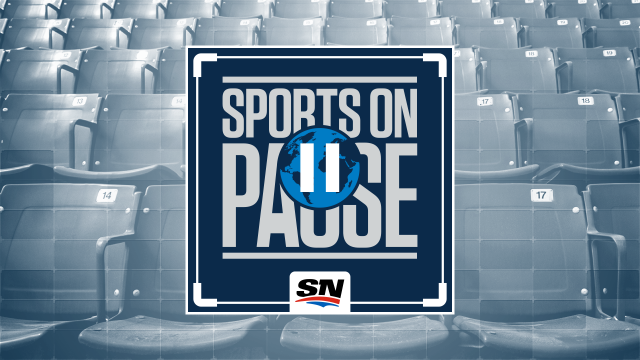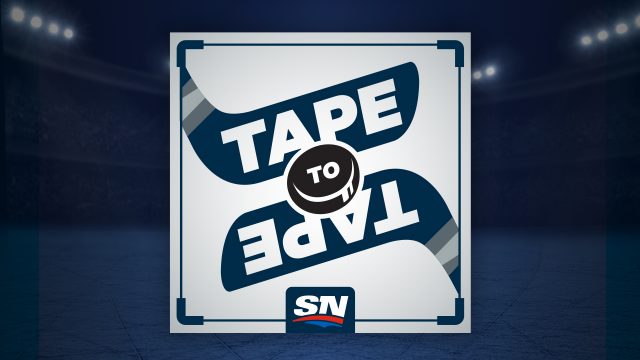
• What’s the earliest the NHL season could resume?
• Why everyone’s watching the AHL for next steps
• Bieber vs. Binnington in the logistical stage?
Don’t know if it was going to involve golf, bocce, bridge or bird watching, but Dave Andrews was supposed to be cruising towards retirement.
the
“I’m much more available than I would like to have been,” he says with a laugh during a Monday afternoon phone call.
After 26 years as the American Hockey League’s president, Andrews is leaving that position on June 30. And that is still the case as he shot down rumours that pandemic planning will keep him in his position past that date. (Scott Howson takes over July 1.)
The AHL has not officially cancelled the rest of this year, but that’s a formality. One theory as to why that hasn’t happened is some AHL players could end up playing for NHL teams, and, as a result, there’s no point in giving them the mindset their year is over. Over the last week, however, NHL GMs were warned about concerns that the AHL could potentially go without playing next season if fans were not allowed into buildings. That is an absolute worst-case scenario, but it exists.
“It’s important for people to understand that this is not about panicking,” Andrews said. “This is about coming up with a plan to make sure the league is sustainable. We’ve been in a good place, and we’re going to find a way to make sure we can stay in a good place. It’s about modelling different scenarios. What if we start in October? What if we start in November? What if we start later? Asking people, ‘What do you think about this?’”
Andrews hopes to present those different scenarios in a couple of weeks. Nineteen of the AHL’s 31 teams are owned by their NHL parents (three have local groups that operate those teams). The other 12 are locally owned. That group includes Hershey (Washington’s affiliate) and Syracuse (Tampa Bay).
Andrews would not go into it, but it is believed those locally owned organizations are most concerned about playing without fans. It may not make sense for them to operate unless their NHL partners are willing to increase financial support.
In theory, it would make sense for the NHL clubs to do just that. Go back to the 2004–05 lockout. Jason Spezza and Eric Staal took huge steps in the AHL while the NHL slept. (I accidentally ended up in the middle of a hilarious argument between Bryan Murray and Jim Rutherford that year over who was better.) It is not at all beneficial to have your top prospects inert.
But no one is escaping the financial implications of the pandemic, and NHL owners will be careful about costs.
One executive proposed “merging” locally owned teams with the others for one year. It’s tricky and far from ideal — that must involve making sure both “parents” are satisfied with the amount of ice their prospects see. Andrews, however, replied that split teams are “not high on the list of solutions.”
But less than a full complement of teams? It could happen.
“If we can’t open 31 building with fans at the same time, one thing we’ll be asking is, ‘How do you feel about playing in empty buildings? Will you play if some buildings are empty and there are fans in others?’” Andrews said. “If we present you with different options, which ones work for you?”
While this might seem like an AHL story, it’s bigger than that. Andrews hopes the blueprint(s) become clear over the next 60 days, and other leagues will be watching. The ECHL, the CHL — any sports league without huge television/digital revenues, really — will be stealing best practices from others on how to get by. (Jeff Marek reported on 31 Thoughts: The Podcast last week that the CHL will be flexible with Memorial Cup dates, keeping options open into June 2021.)
Also, we’ll discuss this later in the blog, but if you were to poll NHL owners, I bet you’d find they’re much more worried about next year than this one.
31 THOUGHTS
1) I have a saying when looking into a story: “What don’t I know?” When it comes to Chicago’s decision to fire John McDonough after a hugely successful run as president and CEO, I’ll admit there’s a lot I don’t know. But here’s what I can share: The best source I’ve spoken to said simply, “It was time.”
From a fan’s standpoint, the biggest question is what this will mean for the hockey department. The most honest thing I can say is that it’s probably too soon to know. It is believed GM Stan Bowman was given an extension last summer, but there are staffers with expiring contracts.
My sense is the Blackhawks would like to let the dust settle from the stunning announcement — see what options emerge for a successor before making those decisions. Will the next president and CEO have the same power, or will the business/hockey operations be split, as other teams have done? They know their employees are shocked, and my guess is they will plot carefully.
2) It won’t surprise you to know there is a ton of interest in the position. The Blackhawks have morphed from zombie-like to a colossus. Danny Wirtz was named as the interim president. Will they promote from within? There are candidates, but will a few of them — including executive VP Jay Blunk, senior VP of hockey operations Al MacIsaac, maybe even Bowman himself — be seen as too close to McDonough? Another name mentioned is VP of marketing Peter Hassen, who pre-dates McDonough’s arrival. We’ll see where it goes.
3) While we wait to see if the season resumes, I’m getting more and more intrigued by the possibility of the Justin Bieber/Jordan Binnington showdown. Will this actually happen?
“Hopefully,” Binnington said during an #Ask31 appearance.
What really stood out was when asked where the event would take place, if there would be tickets sold (assuming that’s even possible) and/or where we can watch it, Binnington answered, “It has to work for both sides, so I’m not going to release that information to you right now.”
That means logistics are being discussed.
“I know both sides want it,” said Joey Hishon, who is friends with both Bieber and Binnington. “Anything they want to happen, they can make happen. I can’t see it not happening.”
Let’s be honest: Right now, this type of event could save humankind.
4) Hishon, taken 17th by Colorado in the 2010 draft, guested on the podcast this week and was excellent. He’s assistant GM and assistant coach at OHL Owen Sound, which he and Binnington led to the Memorial Cup in 2011. A Stratford, Ont., guy, he’s grown a relationship with Bieber as well.
“I’m a little bit older than him, so we weren’t super close growing up,” he explained. “I was in Finland playing for Jokerit in the KHL. (Bieber) was doing a concert there, and wanted to skate.”
This was 2016–17, and Bieber’s father asked if Hishon could set it up. Unfortunately, he was on a road trip at the time, so Hall of Famer Jari Kurri took the ice with Bieber instead. But the two re-connected in January after Binnington challenged Bieber.
“I got a random phone call this year after all the Binnington stuff, and I was put in touch with him,” Hishon said.
Hishon has since been out to Los Angeles a couple of times and, in February, Bieber rented the rink at New York’s Central Park.
“The plan was to skate at the New Jersey Devils’ practice rink. We were to be on the ice at 8:00 p.m., and I got a call at 6:00 saying there’s a car outside. ‘You guys are going to skate at Central Park tonight — keep it quiet.’ We had Central Park pretty much to ourselves — it was incredible. [Bieber] is super passionate about the game, so it’s a ton of fun.”
How good is he?
“I get asked that all the time. [He’s] not bad — really good hands. He doesn’t stickhandle like Patrick Kane, but he can pull things off that you’re like, ‘Wow, I didn’t expect that.’ We’re working on his shot. His skating stride is just OK, but honestly, in a shootout, the only thing that really matters is your hands. And he’s got pretty good hands.”
5) I asked Hishon about one of the wildest rumours of last year, that Bieber (with his father) had expressed interest in owning the Ottawa Senators. He laughed and said he’d never heard that one. He did say Bieber’s budding bromance with Auston Matthews made him wonder about a closer relationship with the Maple Leafs, à la Drake and the Raptors.
6) Obviously, resuming play is not happening without blessings from medical professionals and teams’ respective governments. Predicting this stuff is a worse gamble than trying to guess the first tight end taken in the NFL Draft. (Guess who went with three guys, none of whom were right.)
ESPN’s Adrian Wojnarowski, a terrific reporter, tweeted last Saturday the NBA was going to re-open its facilities May 1. Three days later, that was moved back a week. We’re all guessing. Dr. Anthony Fauci told the New York Times some sports may have to skip this year.
What I believe is this: The NHL will do everything in its power to save this season. There are unofficial schedules/outlines floating all over the place — because all leagues have to submit something to the U.S. government — but nothing is concrete. On Wednesday, the NHL sent out a memo indicating it hopes to open team training facilities to small group activities “at some point in the mid-to-later portion of May.”
The memo continued:
“In this regard, Players and Club staff who may currently be sheltering outside of the Club’s home city should consider whether to plan to return to their Club cities, understanding the attendant travel restrictions and self-quarantine measures that may either be imposed by the NHL/NHLPA or remain applicable in certain jurisdictions. For example, some jurisdictions continue to require a strict 14-day home quarantine following international travel.”
An exact framework for this next phase could be delivered next week. Still unanswered: What happens if some teams can open and others can’t?
If everything continues to positively progress, though, they’d move on to training camps (hopefully June), teams would travel to the “hubs” (later June), and then regular season and playoffs could go on after that (July-September). Can it happen? God only knows.
7) Once teams are allowed on-ice again, I hope everyone investigates the possibility of televising practices live. People would watch. I don’t know if it would be technologically possible to mic up coaches and players, but this is the time to innovate and entertain.
8) A December start for the 2020–21 season is a real possibility, both in the NHL and NBA. The leagues realize that games with fans this summer are not happening. No one likes that, but everyone recognizes it’s a necessity. Next year? I think there’ll be much more pushback to fan-less games. Carolina owner Tom Dundon went public with his dislike, and he’s not alone. One exec, who shares a building with an NBA team, says he wouldn’t be surprised if that league starts on Christmas Day, with the NHL a couple of weeks earlier. (Dec. 25 is a marquee date in basketball, if you don’t follow the sport.) That could push hockey into July, before the Olympics — although I wonder if we’d be talking about a 70-game season, instead of 82.
9) The players badly want a return to the Winter Olympics (and so do I), but if the schedule is this weird and intense — does a February 2022 break make any sense? Does the IOC still indicate a willingness to cover costs?
10) Los Angeles’s Drew Doughty and Montreal’s Phillip Danault have voiced doubts about returning and the players’ willingness to do so. There are lots of questions to be answered here. The amount of time spent in quarantine is one. What happens with players like Vancouver’s Bo Horvat, whose wife, Holly, is expecting? Will players with conditions (asthma/diabetes) that are especially concerning be excused? What are the costs to keep every hotel, arena, practice facility, etc. perfectly clean?
If the season can be resumed, the Kings wouldn’t make the playoffs, and the Canadiens wouldn’t unless they’re expanded to 24 teams. Would players who feel their teams have a better shot at the Stanley Cup feel differently?
11) The NHL and NHLPA have done a good job of keeping the CBA out of the public eye. No one is going to escape this pandemic financially unscathed. However, if the two sides are able to come out of this with a long-term agreement that eases concerns about how everyone can recover, will everyone grudgingly accept the hurdles? Players recognize the possibility of 35 per cent escrow next year, barring something that spreads it out over time. If you’re told coming back for four months this summer might only drop it to, say … 25, that’s tough.
12) I did have two players tell me they would be uncomfortable with daily testing if people who needed it more didn’t have such access.
13) We haven’t even mentioned the coaches and executives. They’re older, obviously (even with John Chayka, Kyle Dubas and Sheldon Keefe trying their best to distort the average). Age brings risk. Someone pointed out the training/equipment staff, who work long hours in tight quarters. I’ve asked myself, how would I feel about the quarantine? I’d probably do it, but not everyone would be the same. It would be a huge victory for my wife’s boyfriend.
14) This is going to be an incredibly popular sentence, but what if the key to resuscitating NHL business is allowing the revenue powerhouses to flex their financial muscle? A growing number of executives say owners are against compliance buyouts, because they don’t want extra costs. If the cap stays at $81.5 million for the next two or three years, there’s going to be a squeeze. (It’s also going to be an enormous advantage for Seattle.)
In general discussions, I think the players threw out the idea of a lower cap, but the response was, “Only if there’s a salary rollback.” There wasn’t a ton of enthusiasm for that. That’s why I liked the creativity of agent Kurt Overhardt’s idea for an “exception player” to the cap. Unlike a compliance buyout, it’s not punitive. It doesn’t have to be used, and if it does there should be an equal luxury tax payment to everyone who doesn’t use one.
There is willingness to dump all over it, but I like this idea instead of hurting teams that draft and develop star players who are getting paid more money earlier than ever. We need creative solutions.
15) The fight against a June 5 draft is fierce. We’ll find out next week, I guess.
16) Quietly significant decision: What will the salary-arbitration walkaway number be?
17) A friend’s biggest concern: “When can I play beer league again?”
18) Brent Burns once picked up San Jose teammate Joel Ward en route to the airport for a road trip. Understand that Burns, earlier in his career, had been late for a meeting and never wanted that to happen again. He said that if he had to be on the plane 30 minutes before it took off, he’d try for 75 minutes. Anyway, Burns said he was “freaking out” because Ward was late, and then when they got to the plane, Ward realized he forgot his passport.
“Now I’m freaking out — for him,” Burns laughed.
But Ward didn’t. He said a professor at university had told him, “It already happened — you can’t change it. Freaking out doesn’t work.”
That stuck with the winger, who retired this week after a 726-game NHL career.
“That advice never worked for me,” Burns said, “but (Ward) was always so composed and relaxed.”
It’s why Ward will make an effective executive as his hockey journey continues.
19) Nov. 13, 2010. I was sitting down to watch Carolina/Montreal. The next day, we were going to film a feature on Andrei Markov. He’d agreed to take us to some of his favourite places in Montreal. I was excited to do it, because really, who knew Markov well? He was giving us a view few had seen. That night, he suffered a knee injury so serious he missed 16 months. We never got the opportunity to do it again. Lost opportunity I always regretted.
20. These are the “knife skills” of Washington Capitals chief amateur scout, Steve Bowman, slicing Kalbi (grilled short ribs) in his London, Ont., home:
Twenty years ago, Bowman was finishing his kinesiology and economics degree at the world’s greatest institution, the University of Western Ontario. He appeared in one exhibition game for the Mustangs, but his playing career came to a close as “I had a great capacity for hurting myself,” he laughed.
Bowman was at a crossroads. Hockey was in his blood through father Jack and uncle Scotty, but “I didn’t want to do just one thing in my life.” He’d done some work as an accountant and tried his luck at selling photocopiers and sliding doors. While waiting for one of his sales calls, he saw a copy of Bon Appetit magazine and picked it up. He had an interest in cooking, and, as fate would have it, his route included the Stratford Chefs School.
“I didn’t sell them a door, but I was convinced by a woman named Elisabeth Lorimer that I should give [chef school]a try,” Bowman said.
So Lorimer was a better salesman than you?
“Yes, they must have been desperate for students,” Bowman replied.
Someone pointed me in the direction of his Instagram (@hockeyscout) where he’s posting daily photos of his work. Bowman worked for some good ones, saving special praise for Susur Lee. The scout was a sous-chef for Lee at the now-closed Lotus in Toronto.
“Working with six or eight people in an eight-by-eight space — it’s intense,” he said. “That’s where I learned my knife skills… filling me in on Asian flavours. Just a great experience.”
But absence makes the heart grow fonder, and Bowman realized how much he missed the sport. A friend offered him a coaching spot in minor hockey, which began the return. In 1997, Ross Mahoney offered him a job with the Capitals. Bowman’s now been there for more than 20 years, and he celebrated the Stanley Cup with a keg stand now legendary among the scouting community. Below is a favourite recipe, which he calls a riff on one from Adam Perry Lang.
Toaster Oven* Prime Rib
(*Can use a regular oven too)
1 prime rib roast on the bone, ideally about three kilos, or seven pounds (will take longer if larger, less time if smaller)
Paste
– 2 tablespoons yellow mustard
– 2 tablespoons Worcestershire sauce
– 2 tablespoons soy sauce (we used gluten-free)
– 1 cube Knorr’s homestyle stock beef bouillon
– 1/4 cup water
Rub
– 2 tablespoons mild chili powder
– 2 tablespoons black pepper
– 1/2 tablespoon cayenne pepper
– 1/2 tablespoon sea salt
– 1 tablespoon canola oil
– zest of one lemon
Pat the roast dry.
Mix the paste ingredients together and rub all over the roast. Put the roast in a Ziploc bag and marinate from 2 hours to overnight (I usually do overnight).
Preheat oven to 275ºF.
Remove roast from bag and wipe paste off. It does not have to be clean. Ideally a bit is left on.
Rub the rub all over roast and place in the oven bones side down.
Cook until the internal temperature reaches 125ºF for medium rare. Usually about 2.5 hours. Check temp after two hours.
While the roast is cooking make the…
Cutting board dressing* (*this is very Adam Perry Lang)
– 2 cloves garlic grated or minced
– 1 1/2 teaspoons sea salt
– 3, or 4, good turns of pepper
– Handful of parsley and any fresh herbs on hand, a bit of thyme or rosemary is nice
– 1/3 cut extra virgin olive oil, possibly add more
Place a cutting board on a larger baking pan as this can be messy.
Chop and mix all of the ingredients together until a nice green oil is on the cutting board.
When roast is done, place on top of the board dressing.
Rest meat for 15 minutes covered loosely with foil.
Slice roast reasonably thinly and dredge through the dressing.
Serve on a platter.
21) Kings forward Alex Iafallo scored big on social media with the video of him delivering toilet paper to neighbour Jeff Carter by drone:
Special roof top delivery from Alex Iaffalo…. Thanks #LockdownCalifornia #HermosaBeach #SOS #StayHome @JeffCarter_77 pic.twitter.com/UkKPjAffZA
— Megan Carter (@Megan_Carter_) March 23, 2020
“We live a block apart (in Los Angeles),” Iafallo said Tuesday. “I owed him. He’s been so helpful, teaching me how to be as consistent as possible every day. If you feel good about your approach, it translates into you being a better person and player.”
This was an important year for Iafallo, who impressed teammates and coaches alike with a career-high 17 goals and 43 points in 70 games. As much as I wanted to discuss his season, I became more interested in his drive home from California to Buffalo.
Here’s his set-up: road bike on the front of his truck, foam mattress on the bed of his truck with pop-up tent above, quickie stove setup.
Can you cook?
“The essentials,” Iafallo laughed. “Omelette with onions and peppers. Pasta. Soup. Prepared and packed in a cooler.”
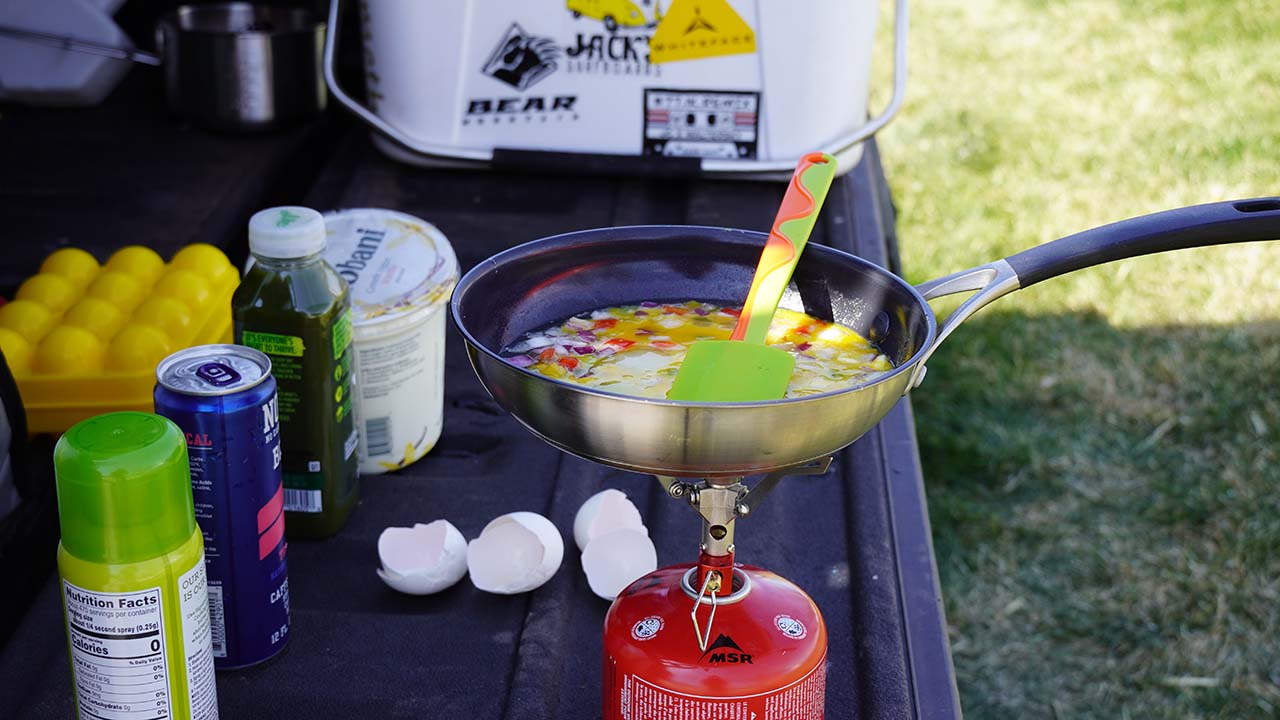
Iafallo spent two nights in Utah, one on a friend’s driveway in Denver, one on teammate Cal Petersen’s driveway in Waterloo, Iowa, en route home.
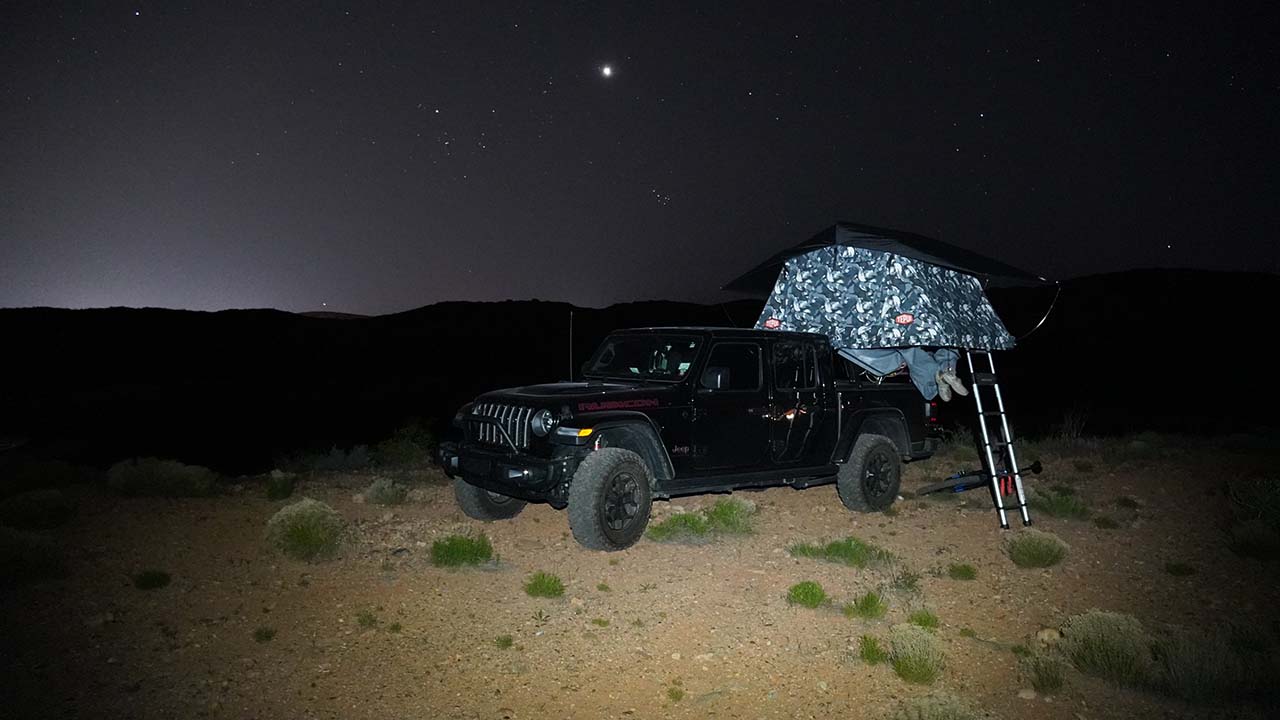
He kept a heater for the colder nights.
“Utah was beautiful. I was able to take my bike on some trails.”
Iafallo loves his outdoors and extreme sports. He surfs when he can with teammate Joakim Ryan.
Who’s better?
“I’ll have to let him speak for himself.”
So you are?
Iafallo just laughed.
Last week, he delivered lunch to his mother, Barb, and fellow nurses at Buffalo General. His best assist in a big personal year.
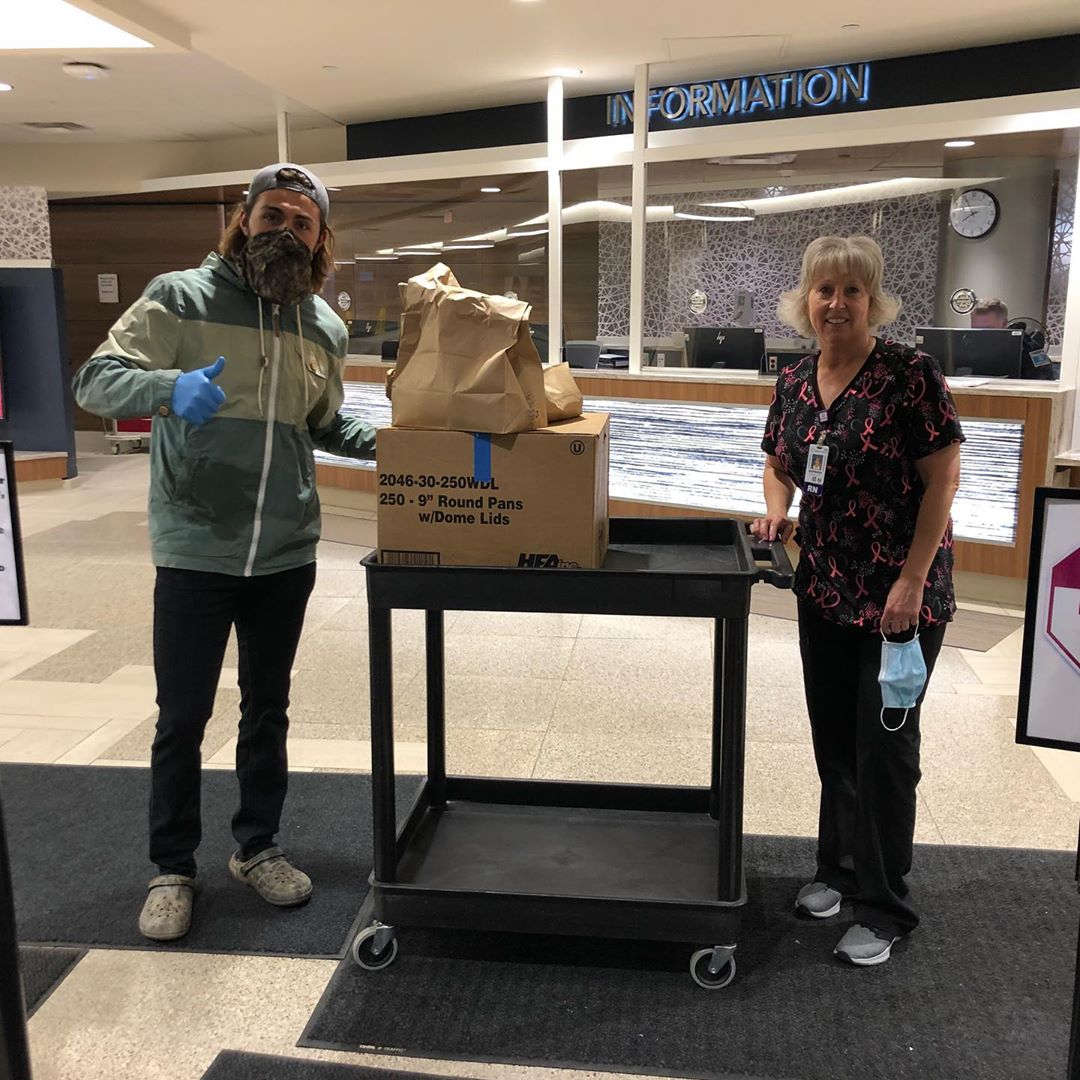
22) One of last week’s great stories was Ben Hutton revealing on the Point Breakaway podcast that, as secret Santa, he gifted Doughty an autographed stick from arch-enemy Matthew Tkachuk. I wondered if the Norris Trophy winner would vow revenge. Apparently, Hutton’s received a couple of shots via text, but the fact it hasn’t been more than that makes Hutton wonder if Doughty already knew. That, or massive revenge-planning is underway.
23) Rocco Grimaldi remembered the game like it was yesterday.
“I was 10 years old. I had something like 200 points in 58 games. It was a crazy year. Back then, there were three really good teams in that league.”
The current Predator was playing minor hockey for the California Waves, and he thinks the opponent was another one of those good teams — the Tigers.
“Our coach had a rule. No one was above the team. He was not afraid to discipline players. If you were late, or you talked back, or showed attitude… you were getting disciplined no matter how big the game. We were winning 2–1, and I extended my shift. He told me not to do that again. I disrespected him. And he sat me.”
That coach was Jack Bowkus, who died March 28 at age 53 after a two-year fight with cancer. That is way too young.
“I met him when I was four years old and kept in touch with him ever since,” Grimaldi said. “California hockey is where it is today because of him. He was always on the ice with kids. He’d be on the ice before my practice would begin, and stay well after I finished. Even when he was sick, he’d be hobbling…. People would tell him to take it easy, and he’d say, ‘Nope, I’ve got to do this for the kids.’ I was very lucky to have him in my life.”
Bowkus would always tell Grimaldi to have “puck poise. Don’t just smack it.” Try to take an extra half-second and put it upstairs. He attended an NHL game where Grimaldi did it, and, afterwards, when they saw each other, Bowkus said, “That’s what I’m talking about.”
You could see Grimaldi smiling at the memory.
24) Grimaldi, by the way, read the Bible in 23 days during the pause — both Old and New Testament. I’m looking at my current 271-page read, feeling quite inferior.
25) Wanted to wrap up a few loose ends from the Canucks’ oral history. First, several interviewees said they think Alex Burrows will be a head coach in the NHL — if he wants to be. For his part, Burrows said he’s happy as an assistant at AHL Laval. What is the biggest change he’s seen in the next generation of players?
“When I (played), no news was good news…. I was happy [when]the coach wouldn’t even wave to me,” he answered. “I knew my job was fine — he was happy with the way I was playing. Nowadays, I feel that you need to let them know if they’re playing well; you need to let them know what they can work on; or you need to let them know what’s not good enough from their play. They don’t want any grey areas. It always needs to be black or white.”
He wasn’t complaining, simply explaining.
26) Will Roberto Luongo be a manager?
“I really enjoy what I’m doing right now,” the Panthers’ special advisor to the GM replied. “There’s a lot of stuff to learn in management. I really enjoy being part of the day-to-day decisions. Hopefully, (I will) just move up the ranks, a little more of a prominent role in the years to come.”
27) A few things were cut from the oral history that didn’t fit the flow, but I thought they were entertaining. If you know anything about the Sedins, you know how competitive they are with each other. The twins run marathons now, and Daniel has a long winning streak over Henrik.
“That’s correct, thank you,” Daniel said.
“That’s why I’ve got a treadmill at home now,” Henrik replied. “I’m running at home a whole lot, so I can beat him in the next event.”
28) It is embarrassing how, 20 years after Henrik and Daniel were drafted, I still can’t tell them apart. Here’s how some Canucks said they did:
Raffi Torres: “I still don’t know. All the retired guys, we do charity events here and there, and I was in Vancouver last year. And I ran into… I still don’t even know which one it was, but I think — I think it was Danny.”
Christian Ehrhoff: “I figured it out quick. When I called their room, sometimes I could tell who was answering the phone. And they said that’s pretty rare someone can tell who’s on the phone when they called.”
Dan Hamhuis: “After two months, I finally was able to figure out which one was which.”
Ryan Kesler: “It took me a while. Hank has a bigger head — Danny has a narrow head. Honestly, it’s like looking at two [completely]different people now. But that first year I didn’t even know what to call them. ‘Hey, how’s it going?’ ‘Okay.’”
Alex Burrows: “First you only see them at the rink and you have no idea. And then as soon as someone says Hank or Danny, you try to remember what kind of sweater they’re wearing that day, or the way they’re shaved. But every time one gets a haircut or shaves, the next day, the other’s got his hair cut, too. After a few weeks, you finally start telling them apart. And they never really made you feel bad for not knowing.”
Laurence Gilman: “It took me one year. Alain (Vigneault) had been coaching there for four years. He couldn’t tell them apart. I don’t even think they look alike anymore. But it did take me a full calendar year.”
29) There was some stuff in there about technological innovations the Canucks tried. Kevin Bieksa told a hilarious story about one he didn’t enjoy: the ARP machine.
“It came from AC Milan, who I guess were one of the first teams in Serie A to use it. It was some of the most painful torture I’ve ever done in my life. They’d hook you up to these machines, claim that it could build muscle and build strength quicker than doing the exercises themselves — and could repair torn soft tissue. So I had a torn calf muscle or something like that. The one tech guy says this is normally maybe a four-to-six week recovery time, [but]‘I can fix you in six treatments.’ And I’m like, ‘What?’ And he says, ‘Yeah, six treatments and you’ll be back skating.’ So, for six days, I went in there for an hour-long treatment. He hooked me up to three different machines that basically tortured the shit out of me, [and]turned them all up to 100 per cent. I’m screaming, yelling and sweating. This is during the games at night and people are looking into the gym like, ‘What the hell is going on in there?’ And sure enough, I still had the tear after six days. I got so mad at the guy. I’m like, ‘What the f— is this? You just tortured the shit out of me and I still have this tear in my muscle!’”
Upon hearing this, another Canuck said, “Only Bieksa could get away with telling you that story.”
30) If you know North York, you will understand how weird it is to drive by this building, and see it looking so… naked:

For 60 years, this was the home of Sea-Hi Famous Chinese Food — Bathurst Street, just south of Wilson. There were two food places we hung out at as teenagers — here and Belly Buster Submarines. It wasn’t high end, but it was tasty, it was fun, the service was great, and, well, they weren’t afraid to give an 18-year-old a beer. (They wouldn’t do it when I was 16, though.) My uncle was the best man at my wedding, and the first time he met my wife-to-be was there.
“This is where you take your girlfriends?” he said disbelievingly while scarfing down the Shanghai noodles.
Yes, it was. Great, great times.
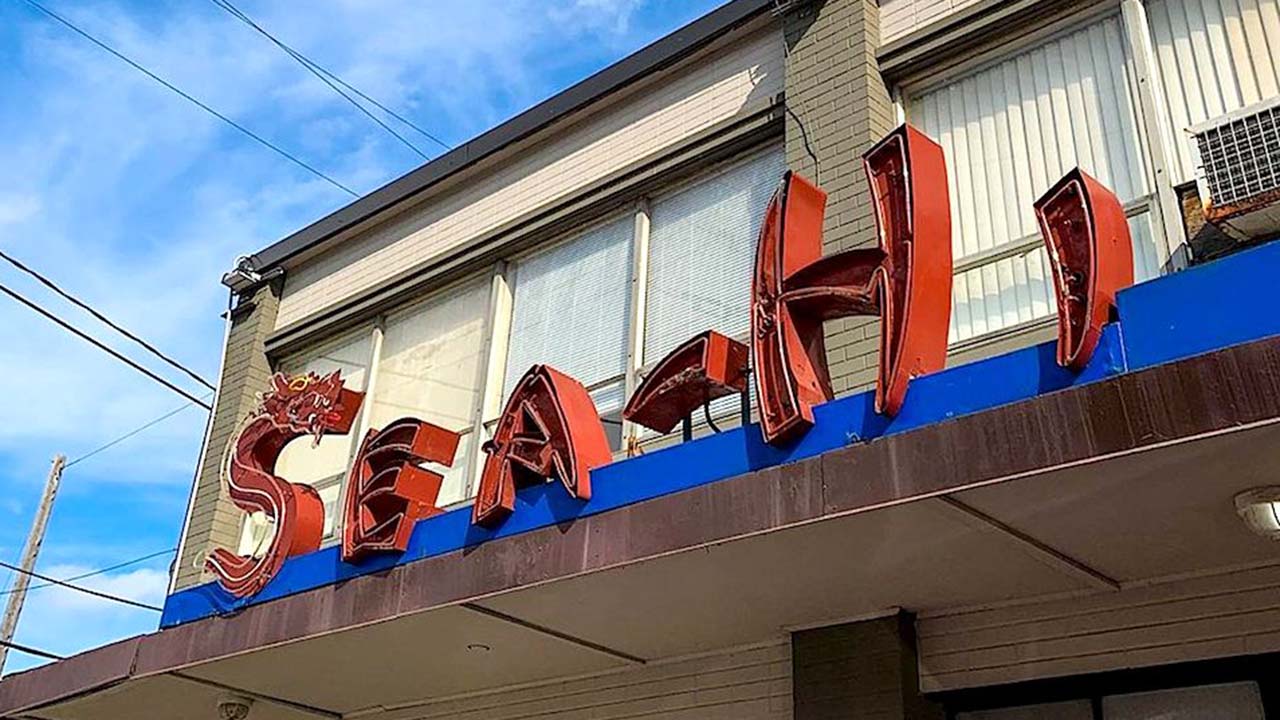
The neon sign is going to be preserved, which is excellent. Awesome memories.
31) I’m like many of you. I plod through this, one step at a time, one foot in front of the other. Two quotes in the last few weeks stood out. The Toronto Star’s Gregor Chisholm did a reader mailbag with Toronto Blue Jays GM Ross Atkins. A fan asked how much Atkins’s evaluation of players evolved since he entered player development in 2001. Atkins answered, “My evaluation of players is much more multi-dimensional now than it was when I was starting my career, but if I had to pick just one nugget of change, it would probably be that I really place an importance on drive and the desire to be great.”
On The Athletic, Kyle Wellwood looked back on his career during an interview with Jonas Siegel. He said, “People don’t understand how hard some of the top guys — how dedicated they are to the sport… how much they sacrifice to make sure they’re good every game.”
Mindset and determination separate the best from everyone else. There is so much we can’t control right now. There is so much that is uncertain. I have a bit of comfort with uncertainty because of things I’ve been through. You take hard mental punches. You feel them. It’s a challenge. Right now, we all need that drive and desire Atkins wrote about. We all need that dedication Wellwood mentioned. It’s hard to maintain. Search for others who’ve got it and draw from them. We will get through this together.



